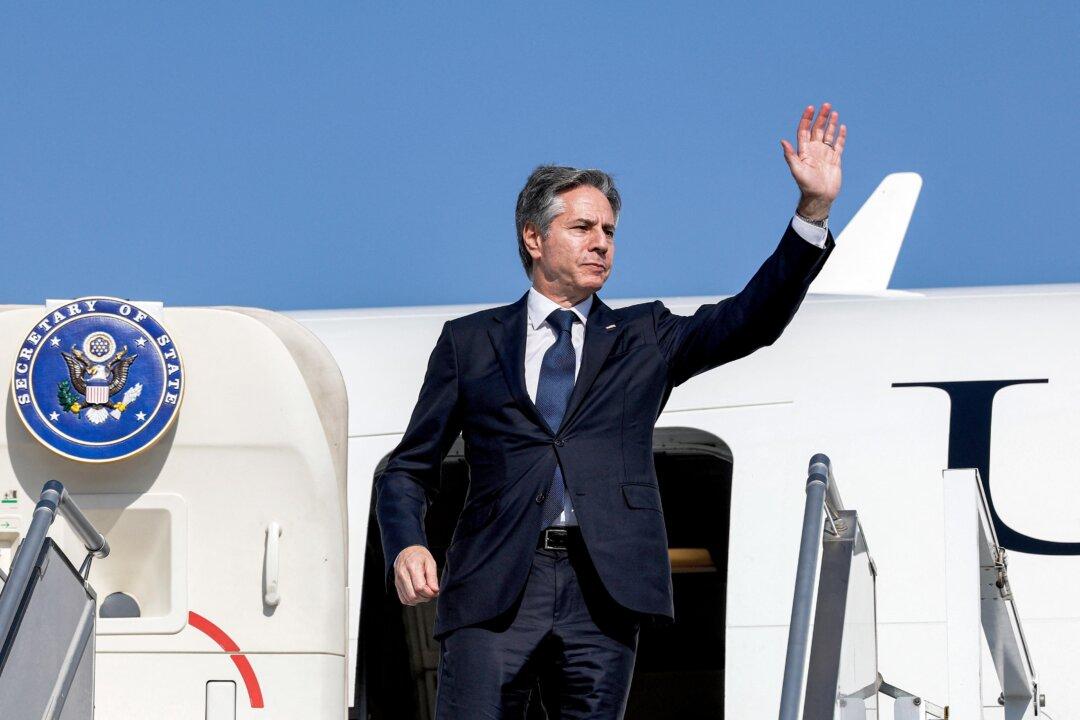Secretary of State Antony Blinken was forced to change planes while returning to the United States from Switzerland on Jan. 17 after the Boeing 737 jet he was meant to fly in suffered a mechanical failure, a State Department official has confirmed.
Mr. Blinken boarded the government-owned modified Boeing plane in Zurich following a day and a half of meetings at the World Economic Forum, which is being held in the town of Davos, located in the Swiss Alps, according to multiple reports.
The aircraft the senior Biden administration official was supposed to fly on was a modified Boeing C-40, a U.S. Air Force aircraft assigned to Joint Base Andrews, Rose Riley, a spokesperson for the Air Force told Axios.
However, after getting on board the plane, Mr. Blinken and his colleagues were informed that the aircraft had suffered a critical malfunction related to an oxygen leak that could not be immediately fixed, Bloomberg reported.
The plane was subsequently deemed unsafe to fly, according to the publication.
A separate Air Force plane was sent to fetch Mr. Blinken, while his aides returned to Washington by commercial flight, according to multiple reports.
‘Mechanical Issue’
Mr. Miller did not provide further details regarding the exact issue with the plane.“There was a mechanical issue. I don’t know the nature of the mechanical issue. But he is in Zurich. He was scheduled to fly back from Zurich. There’s a mechanical issue with his plane. The Air Force has a replacement plane inbound. We expect him to be back still tonight, but several hours later than originally planned,” Mr. Miller said.
“He’d already left Davos, and traveled to Zurich,” the spokesperson added.
The aircraft is a different model to Boeing’s 737 MAX 9 model, which is facing increased scrutiny after the door plug of a newer 737 blew out mid-air earlier this month.
That incident occurred on Alaska Airlines Flight 1282 while it was en route to California from Portland International Airport in Oregon on Jan. 5; resulting in an emergency landing back in Portland.

FAA Probing Boeing
Approximately 171 passengers and six crew members were on board the flight as it soared to an altitude of about 16,000 feet when the door plug—a two-by-four foot panel covering an unused emergency door on the jetliner—blew out, leaving a gaping hole in the plane and causing a rapid loss of cabin pressure.Miraculously, there were no fatalities or serious injuries as a result of the terrifying incident.
The FAA has said its probe into Boeing and the 737-9 MAX model will focus on whether or not the planemaker “failed to ensure completed products conformed to its approved design and were in a condition for safe operation in compliance with FAA regulations.”
The Epoch Times has contacted a spokesperson for Boeing and the State Department for further comment.







